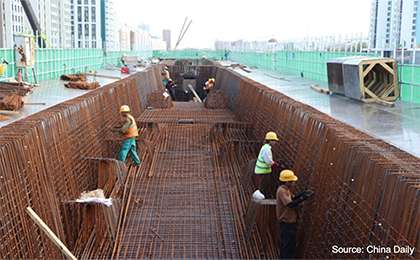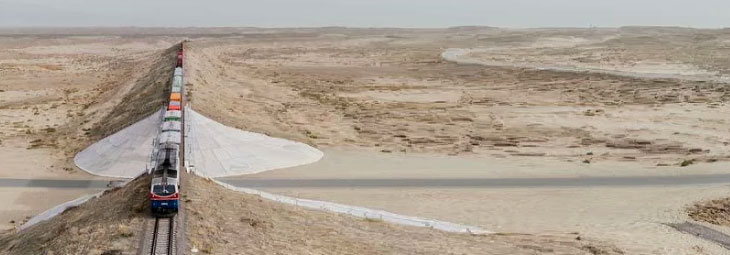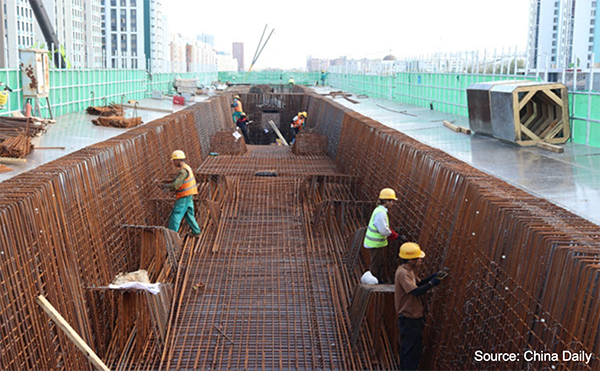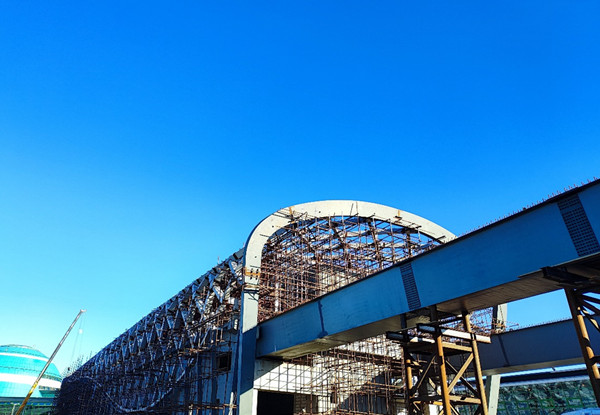



Construction workers from Yunnan Construction and Investment Holding Group Co Ltd build the Astana Light Rail Project in Kazakhstan, a key undertaking under the Belt and Road Initiative. [Photo provided to chinadaily.com.cn]
The Astana Light Rail Project in Kazakhstan, a key undertaking under the Belt and Road Initiative and also the first railway in Central Asia being constructed with Chinese standards, is progressing swiftly.
According to the one of the builders from Yunnan Construction and Investment Holding Group Co Ltd, the whole project is anticipated to be completed and start trial operation by September 2026.
Wei Hua, deputy Party secretary and chairman of Yunnan General Construction Contracting Co Ltd under group, said: "The total investment for Phase 1 of the Astana Light Rail Project is $1.888 billion, with a total length of 22.4 kilometers. Our company is in charge of constructing 3.52 kilometers of it."
Wei said his company joined the construction work since July 2023 and is tasked with building four stations and four sections between station No 105 (excluded) and station No 109 (included).

The Astana Light Rail Project, a key undertaking under the Belt and Road Initiative and being partially built by Yunnan Construction and Investment Holding Group Co Ltd, is progressing swiftly in Kazakhstan. [Photo provided to chinadaily.com.cn]
He stressed that their whole job covers station buildings, structures, decoration, plumbing, water firefighting systems, power lighting, heating, ventilation, air conditioning and comprehensive grounding work.
The Astana Light Rail Project aims to link some significant landmarks and key functional areas in Astana, including the Nur-Sultan International Airport, Nazarbayev University, the Expo Park, the Presidential Palace and the new railway station.
Once operational, the light rail will largely cut the commuting time between the two ends of the line.
By Zhuang Qiange and Pang Bo
Source: https://www.chinadaily.com.cn/a/202406/28/WS667e48aba31095c51c50b5b6_1.html